Oxygen runs low during India’s Covid crisis – photo essay
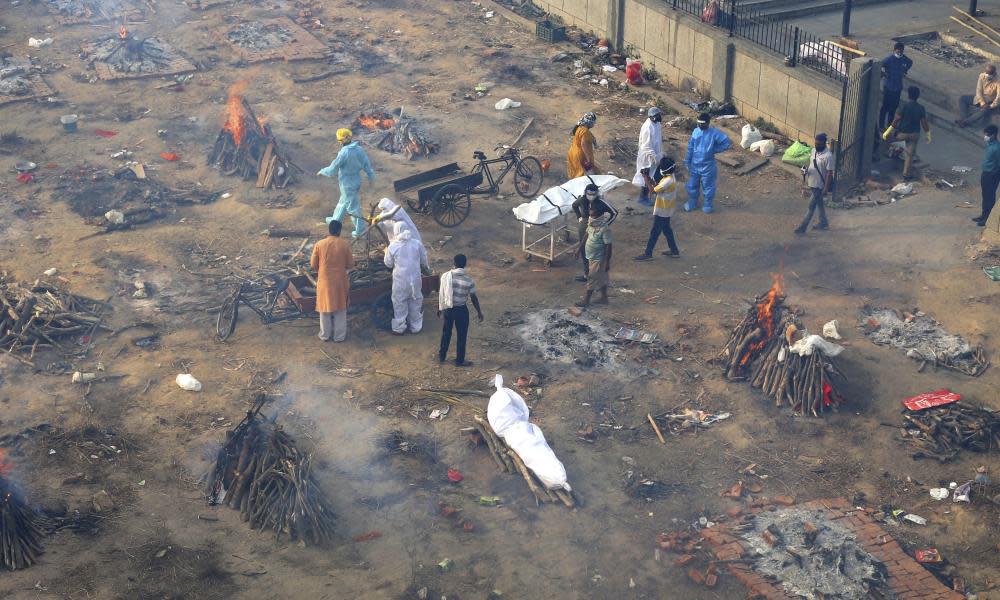
Hospitals in parts of India are using social media to beg for help finding oxygen and key equipment as the country’s second Covid-19 wave continues to build, breaking global records for the most infections detected in a single day.
Only two months ago, some in the vast country of more than 1.3billion people were celebrating what they thought was the end of Covid-19 after six successive months of falling caseloads. Most of the remaining restrictions on social life were removed and people again flocked to markets, cricket stadiums and religious festivals.
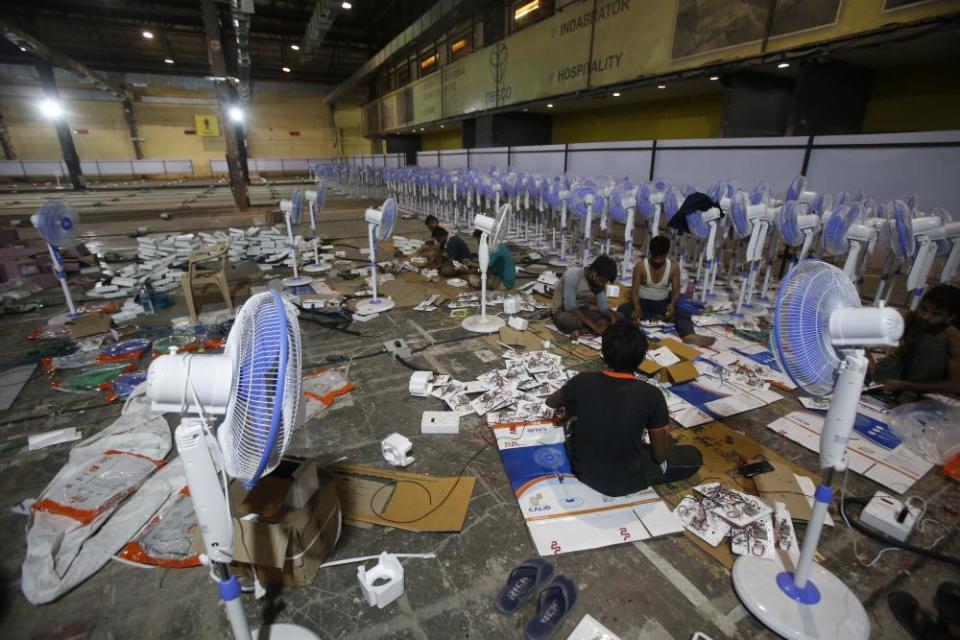
Labourers working to set up at Covid-19 field hospital in Mumbai on 22 April
Few heeded the advice of some public health specialists that Covid-19 cases were still being detected, including some variants that had been shown to be highly infectious in other countries, and that it was too early to declare victory.
A man learns of his father’s death from Covid in front of a government-run Covid hospital in Kolkata on 22 April
In the middle of March, the number of recorded cases started to grow faster than in any other country, this week passing 300,000 a day, along with more than 2,000 deaths, close to twice the daily deaths India experienced during the first peak of the virus between July and September 2020.
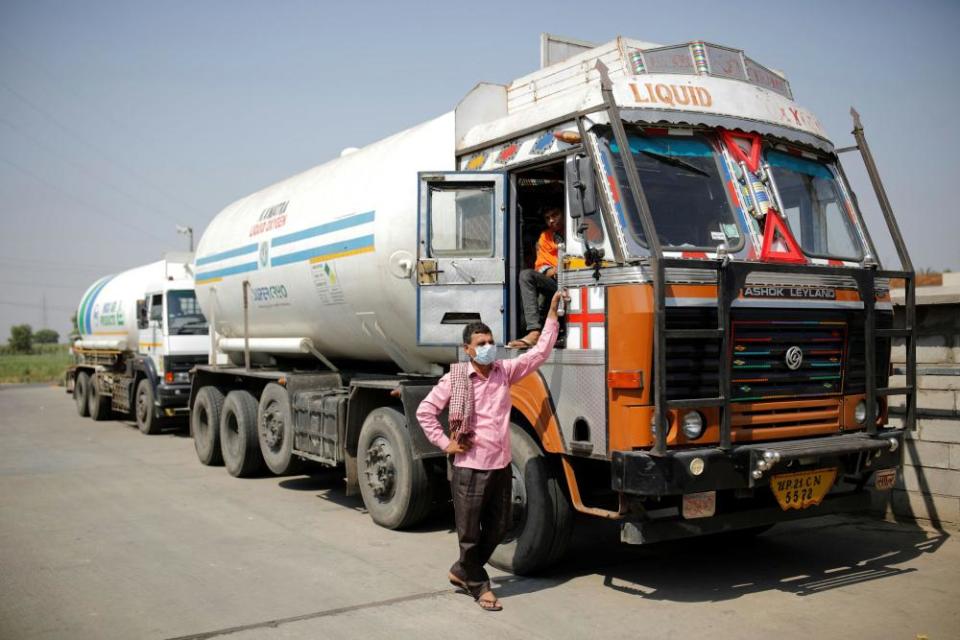
A driver stands next to an empty tanker as he waits for his turn to fill liquid oxygen, to be transported to a Covid hospital on the outskirts of New Delhi, 22 April
Oxygen, and the lack of it, has been the focus of significant alarm this week, as the size of the second wave strains supplies even in India’s major cities. Hospitals, government administrators and ordinary citizens are using Twitter and WhatsApp to try to find canisters of oxygen, alongside beds in intensive-care units and drugs such as remdesivir or ivermectin. Neither is proven to help with the virus, but people are desperate.
Adding to the sense of crisis, a leak in oxygen supplies at a hospital in India’s worst-hit state, Maharashtra, led to the deaths of at least 24 Covid-19 patients.
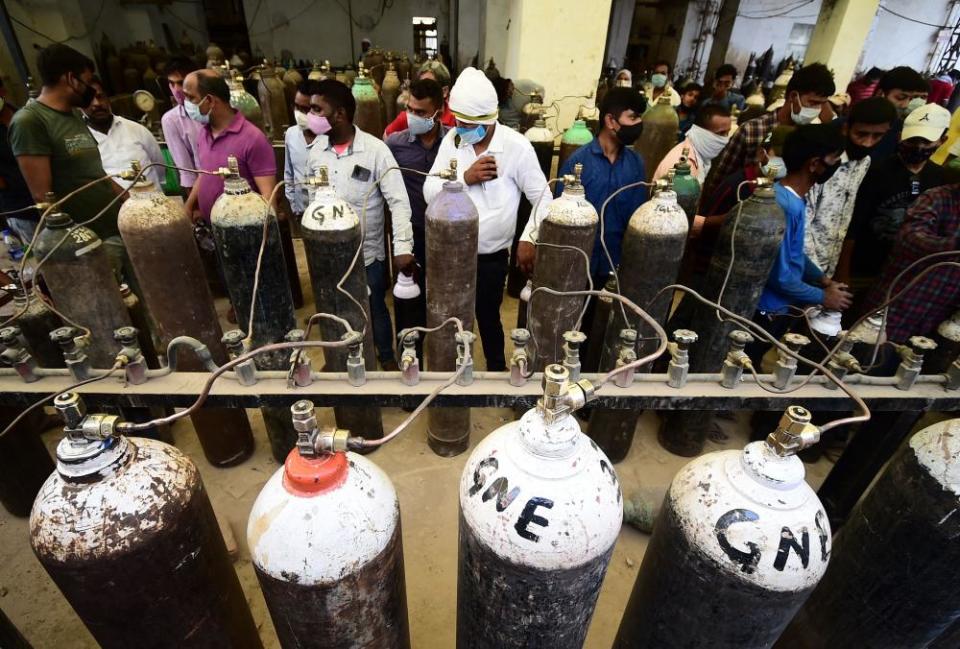
People refill medical oxygen cylinders for Covid patients at an oxygen refill station in Allahabad on 20 April
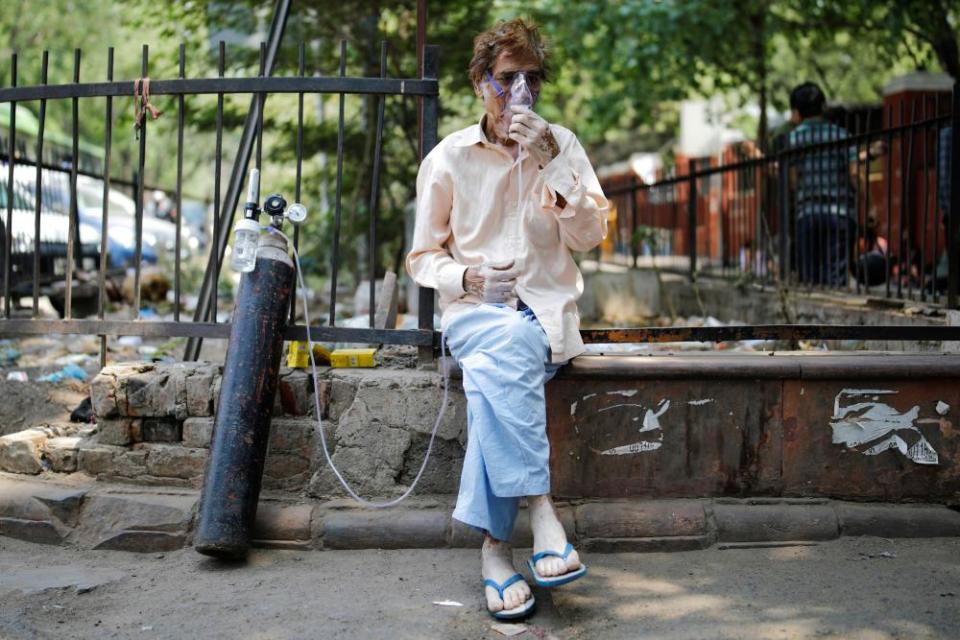
The real death toll from the virus is thought to be significantly higher than official figures, amid reports of some state governments fudging data, and crematorium equipment in some states melting due to the constant heat of fires burning day and night.

Relatives wearing personal protective equipment (PPE) attend the funeral of a man who died from Covid, at a crematorium in Delhi on 21 April
Some of India’s most prominent politicians have become sick, including the main opposition leader, Rahul Gandhi, and the former prime minister Manmohan Singh, who is in hospital with the virus despite having been vaccinated.
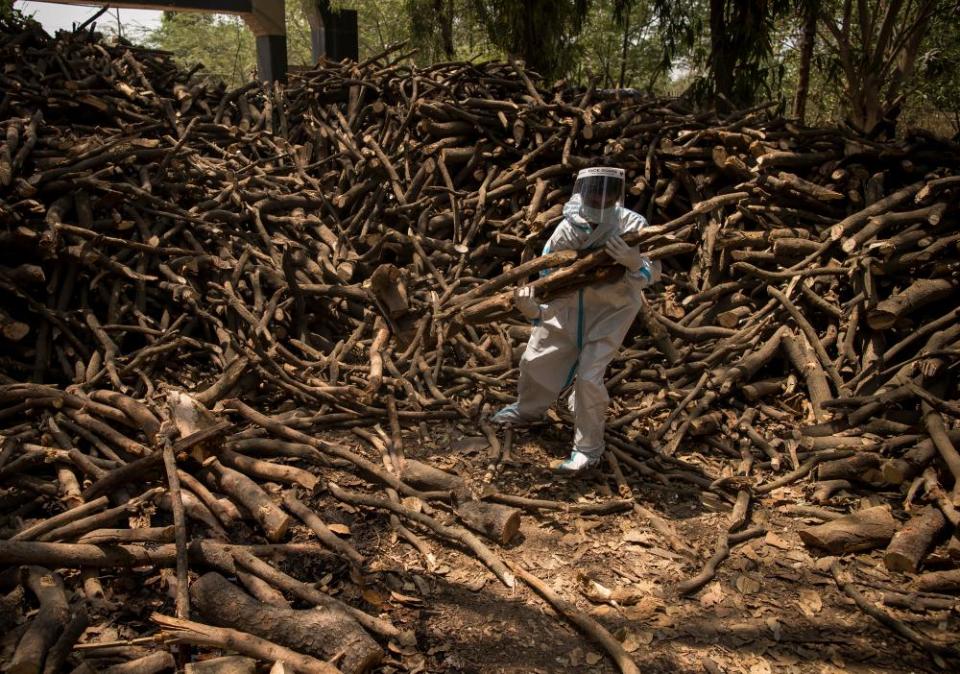
Cemetery workers wearing PPE sort logs for funeral pyres, to perform the last rites for patients who died of Covid, on 22 April at a crematorium in the outskirts of New Delhi
It is not clear why virus numbers fell so sharply last year and why they have climbed so quickly now. Experts speculate that highly infectious variants may be playing a role but say their impact was strongly exacerbated by the resumption of normal life in much of the country.

People crowd at a bus station on 19 April, hours before a week-long lockdown ordered by the Delhi government comes into effect
Indian leaders are reluctant to declare a nationwide lockdown of the kind imposed last April, which led hundreds of thousands of migrant workers to return home to their village and home cities. The exodus severely damaged the Indian economy, pushing millions back into a poverty that, for some, could have been deadlier than the virus itself. But there are reports from cities such as Delhi that migrants are already starting to leave again, fearing they will be trapped.

An ambulance wait for entry outside at the Lok Nayak Jaiprakash Narayan hospital in Delhi on 21 April
India produces more than 80m vaccines a month, and has been administering about 3m each day over the past few weeks. That is one of the fastest vaccination rates in the world, but has barely made a dent in a country with an estimated adult population of around 900 million people.
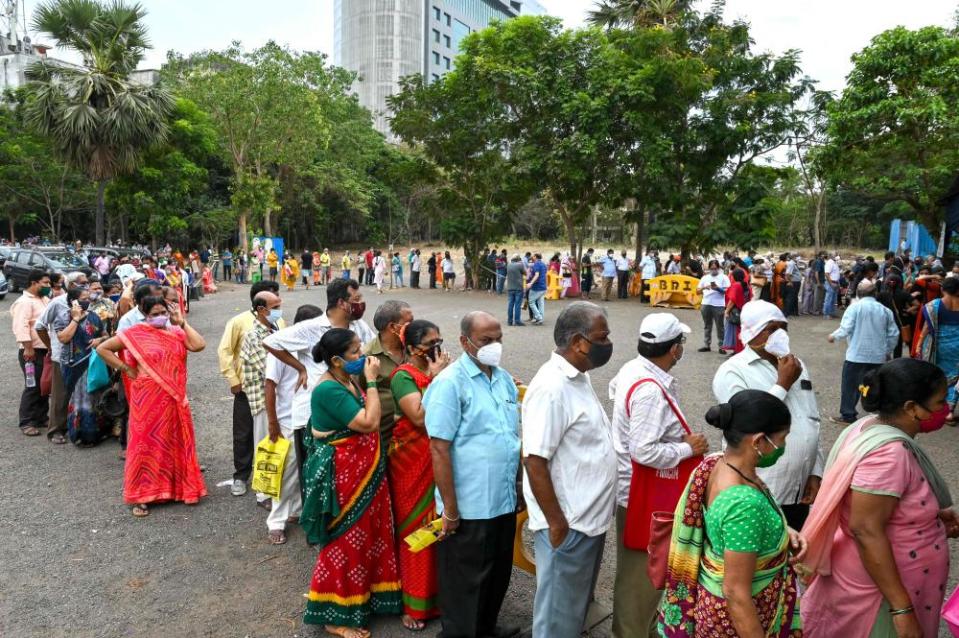
People wait in queues to receive the vaccine at a vaccination centre in Mumbai on 21 April
The crisis will also have knock-on effects for efforts to vaccinate other developing countries, many of which are relying on Indian manufacturers to supply them with vaccines through the UN-backed Covax scheme. India has sharply reduced the amount of vaccines it is permitting to be exported as it seeks to reassure its own population and get as many people vaccinated as possible.
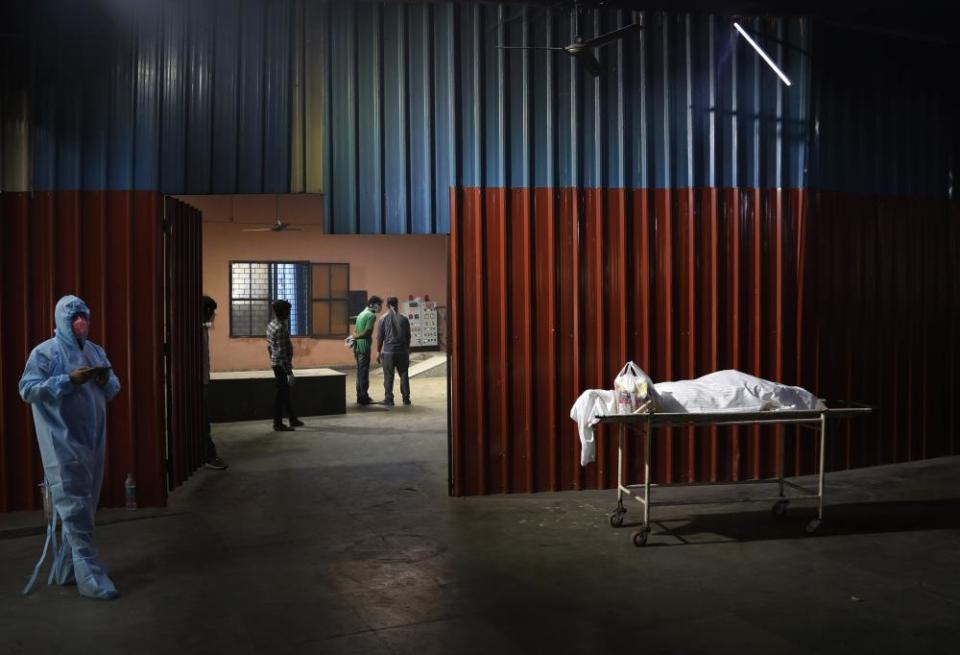
A body of a Covid victim waits to be cremated in New Delhi, 19 April
But it will take months, at least, of consistent vaccination to reach a critical mass of the population. In the short term, the country can only rely on quarantines and social distancing, a strategy that many who rely on daily wages to survive cannot afford.

 Yahoo Movies
Yahoo Movies 
